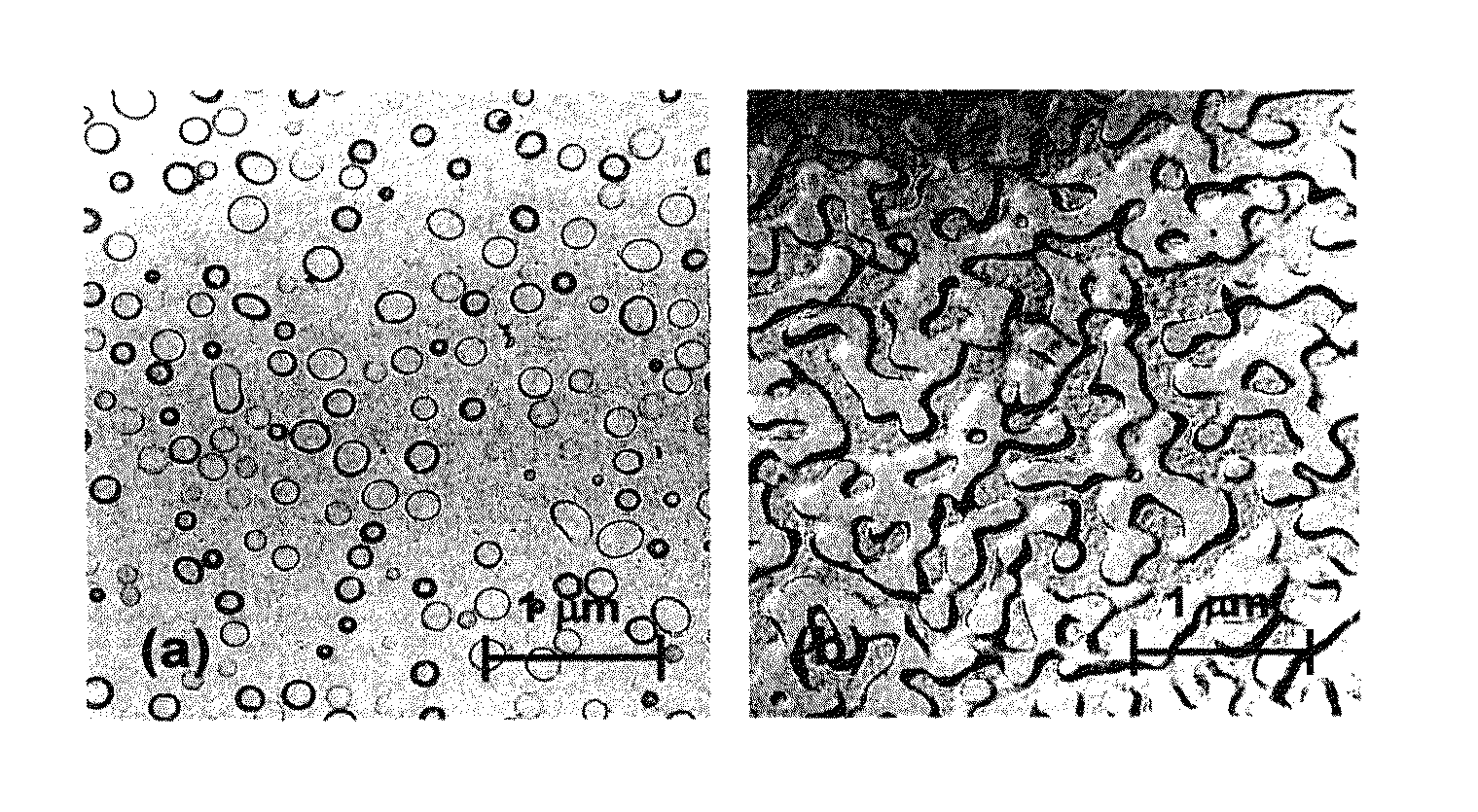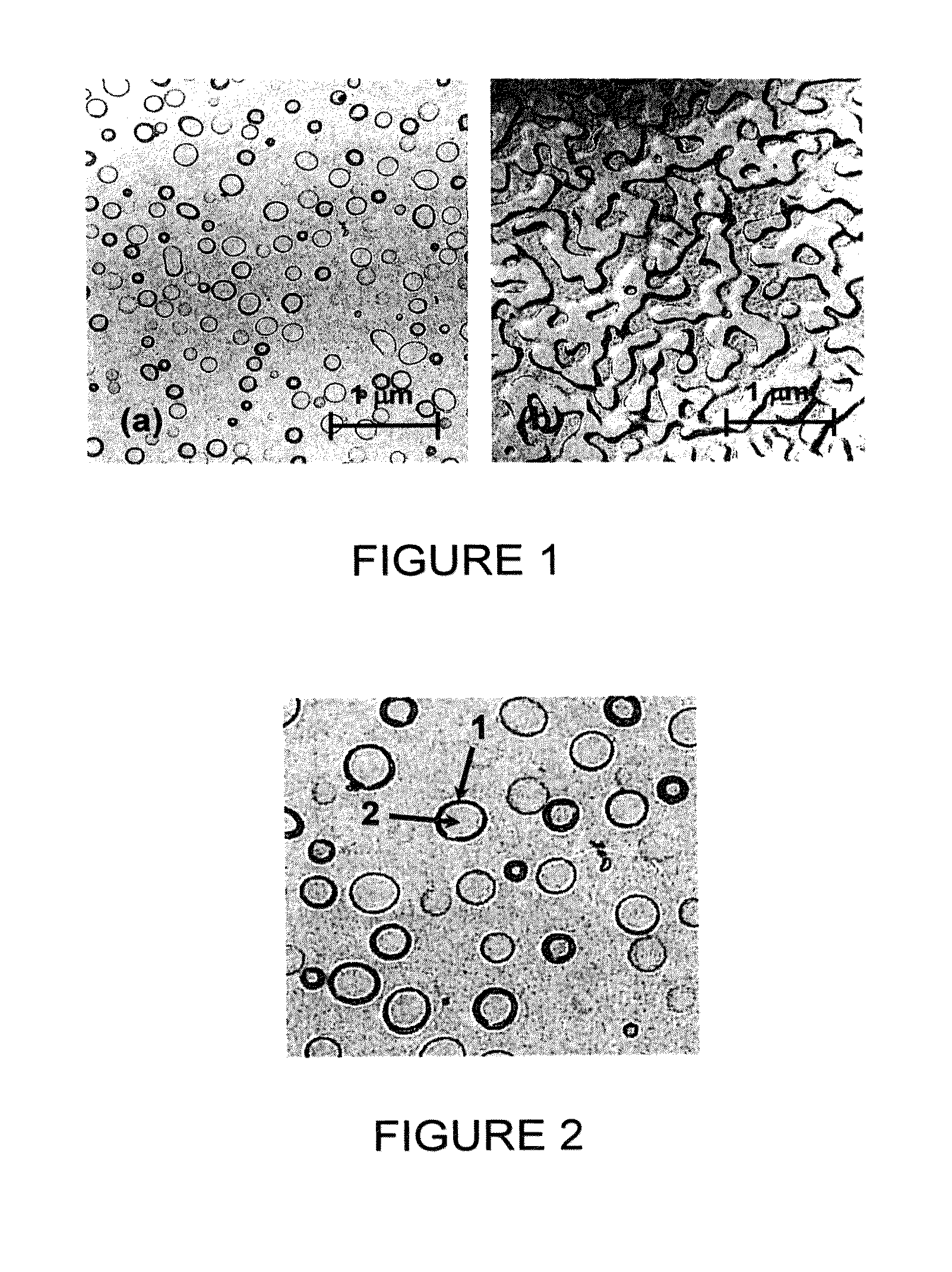Phase-separated soda-lime-silica glass
a soda-lime-silica glass and phase separation technology, applied in the field of soda-lime-silica glass, can solve the problems of optical defect, mechanical defect, reduction of transparency, etc., and achieve the effects of preventing or at least limiting unwanted devitrification and phase separation phenomena, improving mechanical properties, and good resistance to scratch propagation
- Summary
- Abstract
- Description
- Claims
- Application Information
AI Technical Summary
Benefits of technology
Problems solved by technology
Method used
Image
Examples
Embodiment Construction
[0029]The glass according to the invention is a soda-lime-silica material, that is to say a glass that belongs to the Na2O—CaO—SiO2 system. The glass of the invention hence has SiO2, Na2O and CaO as main components. In particular, the glass of the invention comprises, as a percentage by total weight, 60 to 85% of SiO2, 1 to 25% of Na2O and 1 to 25% of CaO. Additionally, it may comprise other components in minor amounts such as K2O, MgO, Al2O3, BaO, various dyestuffs or residues originating from additives that modify the redox (NaNO3, Na2SO4, coke, etc.). Preferably, these components, if they are present in the glass of the invention, will not exceed, in total, 15% by weight of the glass.
[0030]According to one particular embodiment of the invention, the glass is free of the element fluorine. Such a soda-lime-silica glass hence has a low environmental impact, in particular compared to opal glass, the opacifier of which is conventionally based on one of these components. The expression...
PUM
| Property | Measurement | Unit |
|---|---|---|
| size | aaaaa | aaaaa |
| size | aaaaa | aaaaa |
| size | aaaaa | aaaaa |
Abstract
Description
Claims
Application Information
 Login to View More
Login to View More - R&D
- Intellectual Property
- Life Sciences
- Materials
- Tech Scout
- Unparalleled Data Quality
- Higher Quality Content
- 60% Fewer Hallucinations
Browse by: Latest US Patents, China's latest patents, Technical Efficacy Thesaurus, Application Domain, Technology Topic, Popular Technical Reports.
© 2025 PatSnap. All rights reserved.Legal|Privacy policy|Modern Slavery Act Transparency Statement|Sitemap|About US| Contact US: help@patsnap.com


